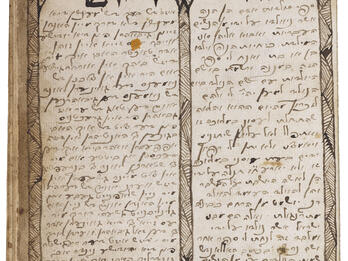Poetry and Modernity
Jewish poets throughout Europe and the Americas created in the languages of their native tongues, allowing us access to voices and moments, particular and collective, that we would otherwise not hear.
Poetry is the literary genre that most defies translation. If the elasticity of meaning is lost in translation of prose, how much more so for poetry, built from the marrow of words: their sounds, their cadences, their accents, their meters, lost in the journey to a different tongue. Allusion, intertext, the music of language—all but one plain meaning out of many are sloughed off by the necessity of translation. So why include poetry if so much of it is anglicized from the original? Despite the caveats, poetry reaches places that prose cannot: from personal emotion—love, despair, joy, shame, rage; to the political—triumph and disaster of a people as well as calls to ideological arms.
Masterful poetry conferred authority on its writers as tellers of deep truths and as seers of penetrating vision. Even in translation we can sense the stiffness of the first attempts to breathe new life into Hebrew, as well as its subsequent growth and maturation over time and place. Jewish poets throughout Europe and the Americas created in the languages of their native tongues. From folk-song lyrics to wedding riddles and synagogue hymns, poetry, even in translation, allows us access to voices and moments, particular and collective, that we would otherwise not hear. To Rachel Luzzatto Morpurgo’s plaintive cry—“I’ve looked to the north, to the south and east, and west; // in each a woman’s word is lighter than dust. // Years hence, will anyone really remember // her name, in city, province, any more // than a dead dog’s?”1—Emma Lazarus’s confident voice provides the ultimate rejoinder. It continues to echo in millions of ears even today.
Notes
Richard I. Cohen, “Urban Visibility and Biblical Visions,” in Cultures of the Jews, ed. David Biale (New York: Schocken Books, 2002), 756.


